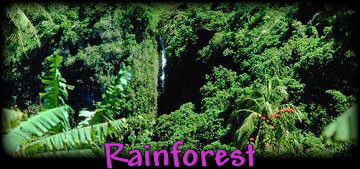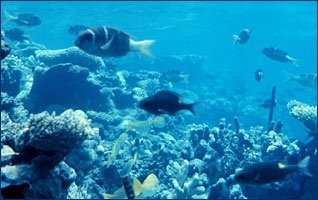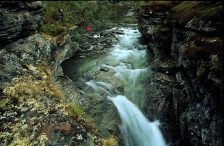Biomes- Is a naturally occurring community that occupies a major habits !
 Is a tropical paradise or a tropical death trap to those who are unfamiliar for most it is a death trap because we people are mostly inhabited in a concrete jungle. There is two types of rainforests ( Tropical ) & ( Temperate ) tropical rainforests are mostly located near the equator where it is mostly warm all year round that's why it is called TROPICAL. Temperate rainforest grow between tropics and polar regions temperature is modern climate
Is a tropical paradise or a tropical death trap to those who are unfamiliar for most it is a death trap because we people are mostly inhabited in a concrete jungle. There is two types of rainforests ( Tropical ) & ( Temperate ) tropical rainforests are mostly located near the equator where it is mostly warm all year round that's why it is called TROPICAL. Temperate rainforest grow between tropics and polar regions temperature is modern climate  Ocean biomes is by far the largest of all ecosystems there's thousands of marine life like fishes, sharks, jellyfishes, stingrays, crabs etc... There's three parts of an ocean. The ocean itself , coral reefs & estuaries *Coral Reef* is like a barrier around the continent it contains coral, fish , microorganism, invertebrates
*Estuaries* are areas where freshwater streams or rivers merge with the ocean. Mixing different levels of salt in the water, supporting a diverse fauna, including a variety of worms, oysters, crabs, and waterfowl
Ocean biomes is by far the largest of all ecosystems there's thousands of marine life like fishes, sharks, jellyfishes, stingrays, crabs etc... There's three parts of an ocean. The ocean itself , coral reefs & estuaries *Coral Reef* is like a barrier around the continent it contains coral, fish , microorganism, invertebrates
*Estuaries* are areas where freshwater streams or rivers merge with the ocean. Mixing different levels of salt in the water, supporting a diverse fauna, including a variety of worms, oysters, crabs, and waterfowl  The tundra biome is the coldest of all biomes and it is a treeless land it is noted for its frost-molded landscapes, extremely low temperatures,
little precipitation, poor nutrients, and short growing seasons. There are two types of Tundras there is "Arctic Tundra" & "Alpine Tundra"*Arctic Tundra* is located in the northern hemisphere The arctic is known for its cold, desert-like conditions. The growing
season from 50 to 60 days. The average winter temperature is -34° (-30° ), but the average summer temperature is 3-12° (37-54° )*Alpine Tundra* is located on mountains throughout the world at high altitude where
trees cannot grow. The growing season is about 180 days. The
nighttime temperature is usually below freezing. Unlike the arctic
tundra, the soil in the alpine is well drained. The plants are very
similar to those of the arctic ones and include
The tundra biome is the coldest of all biomes and it is a treeless land it is noted for its frost-molded landscapes, extremely low temperatures,
little precipitation, poor nutrients, and short growing seasons. There are two types of Tundras there is "Arctic Tundra" & "Alpine Tundra"*Arctic Tundra* is located in the northern hemisphere The arctic is known for its cold, desert-like conditions. The growing
season from 50 to 60 days. The average winter temperature is -34° (-30° ), but the average summer temperature is 3-12° (37-54° )*Alpine Tundra* is located on mountains throughout the world at high altitude where
trees cannot grow. The growing season is about 180 days. The
nighttime temperature is usually below freezing. Unlike the arctic
tundra, the soil in the alpine is well drained. The plants are very
similar to those of the arctic ones and include
The dessert biome covers about 1/5 of the earths surface and occur where rainfall is less than 50 cm/year.There are four types of desserts *Hot & Dry*, *Semiarid*, *Coastal *, *Cold* *Hot & Dry* Temperatures exhibit daily extremes because the atmosphere contains
little humidity to block the Sun's rays. Desert surfaces receive a
little more than twice the solar radiation received by humid regions and
lose almost twice as much heat at night. The extreme maximum ranges from 43.5-49°. Minimum temperatures sometimes drop to -18°. Rainfall is usually very low and concentrated in short bursts between long rainless periods some years are even rainless.The animals include small nocturnal carnivores. The
dominant animals are burrowers and kangaroo rats. There are also
insects, arachnids, reptiles and birds. *Semiarid* The major deserts of this type include the sagebrush of Utah, Montana
and Great Basin. They also include the Nearctic realm (North America,
Newfoundland, Greenland, Russia, Europe and northern Asia).The summers are moderately long and dry, and like hot deserts, the
winters normally bring low concentrations of rainfall. Summer
temperatures usually average between 21-27°. It normally does not go
above 38° C and evening temperatures are cool, at around 10°. Cool nights help both plants and animals by reducing moisture loss from transpiration, sweating and breathing. During the day, insects move around twigs to stay on the shady side;
jack rabbits follow the moving shadow of a cactus or shrub. Naturally,
many animals find protection in underground burrows where they are
insulated from both heat and aridity. These animals include mammals such
as the kangaroo rats, rabbits, and skunks; insects like grasshoppers
and ants; reptiles are represented by lizards and snakes; and birds such
as burrowing owls and the California thrasher. *Coastal*These deserts occur in moderately cool to warm areas such as the
Nearctic and Neotropical realm. A good example is the Atacama of Chile.The cool winters of coastal deserts are followed by moderately long,
warm summers. The average summer temperature ranges from 13-24° C;
winter temperatures are 5° C or below. The maximum annual temperature is about 35° C and the minimum is about -4° C.The average rainfall measures 8-13 cm in many areas. The maximum annual
precipitation over a long period of years has been 37 cm with a minimum
of 5 cmThe fairy shrimps also lay dormant eggs. Other animals include: insects,coyote and badger, toads, birds great horned
owl, golden eagle and the bald eagle, lizards and snakes *Cold* These deserts are characterized by cold winters with snowfall and high
overall rainfall throughout the winter and occasionally over the summer.They occur in the Antarctic, Greenland and the Nearctic realmThey have short, moist, and moderately warm summers with fairly long,
cold winters. The mean winter temperature is between -2 to 4° C and the
mean summer temperature is between 21-26° C.The winters receive quite a bit of snow. The mean annual precipitation
ranges from 15-26 cm. Annual precipitation has reached a maximum of 46
cm and a minimum of 9 cm. The heaviest rainfall of the spring is usually
in April or May. The main plants are deciduous, most having spiny leaves. Widely
distributed animals are jack rabbits, kangaroo rats, kangaroo mice,
pocket mice, grasshopper mice, and antelope ground squirrel, badger, kit fox, and coyote






No comments:
Post a Comment